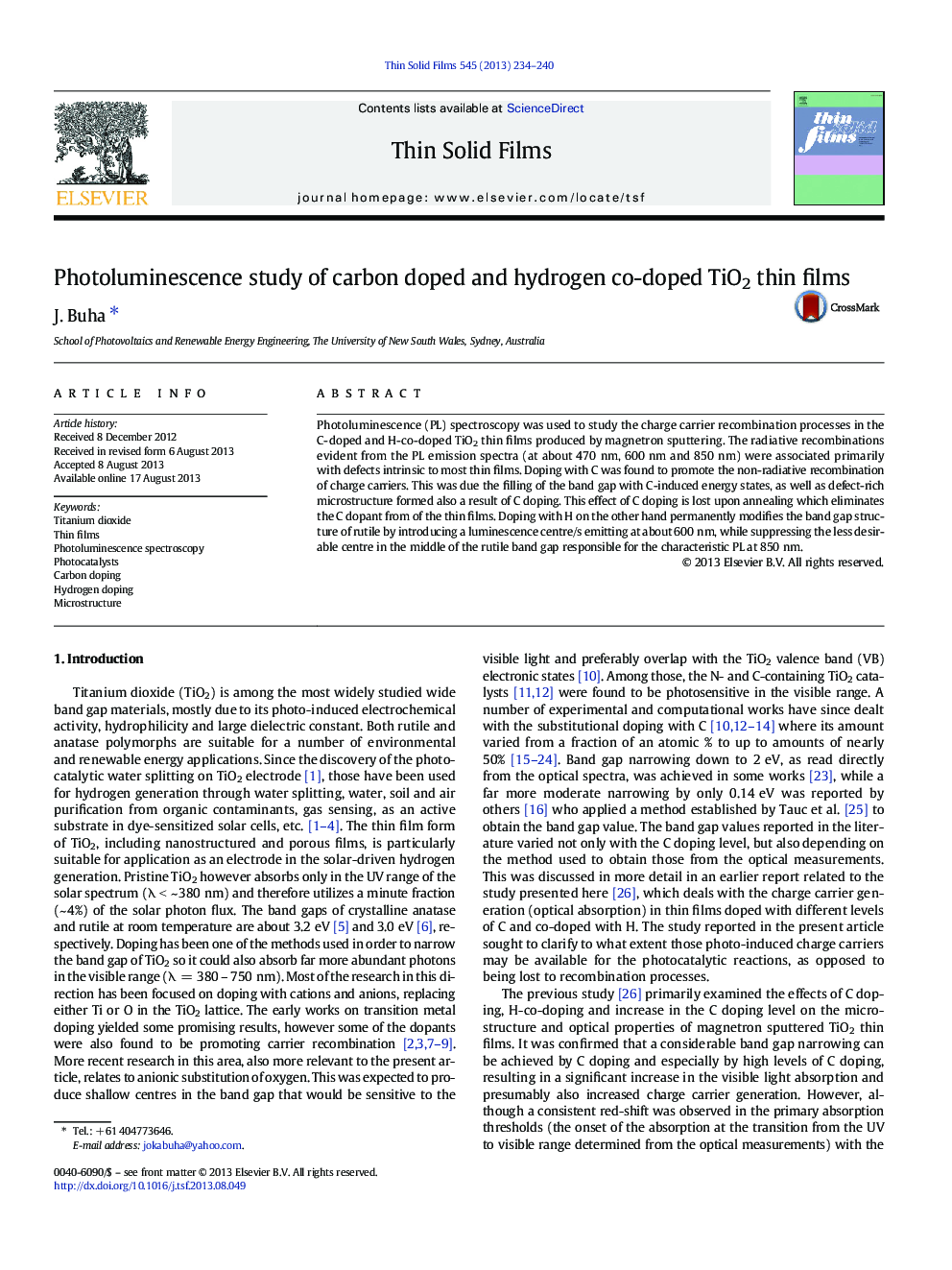| Article ID | Journal | Published Year | Pages | File Type |
|---|---|---|---|---|
| 8036057 | Thin Solid Films | 2013 | 7 Pages |
Abstract
Photoluminescence (PL) spectroscopy was used to study the charge carrier recombination processes in the C-doped and H-co-doped TiO2 thin films produced by magnetron sputtering. The radiative recombinations evident from the PL emission spectra (at about 470Â nm, 600Â nm and 850Â nm) were associated primarily with defects intrinsic to most thin films. Doping with C was found to promote the non-radiative recombination of charge carriers. This was due the filling of the band gap with C-induced energy states, as well as defect-rich microstructure formed also a result of C doping. This effect of C doping is lost upon annealing which eliminates the C dopant from of the thin films. Doping with H on the other hand permanently modifies the band gap structure of rutile by introducing a luminescence centre/s emitting at about 600Â nm, while suppressing the less desirable centre in the middle of the rutile band gap responsible for the characteristic PL at 850Â nm.
Keywords
Related Topics
Physical Sciences and Engineering
Materials Science
Nanotechnology
Authors
J. Buha,
